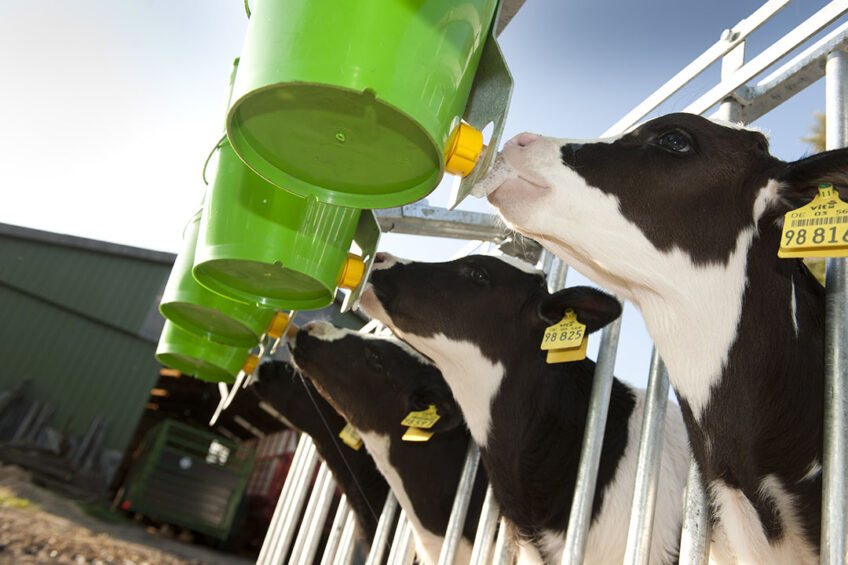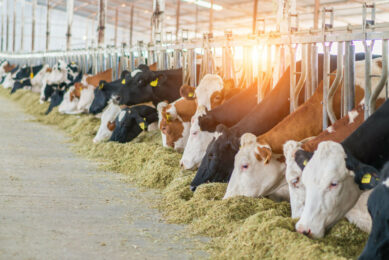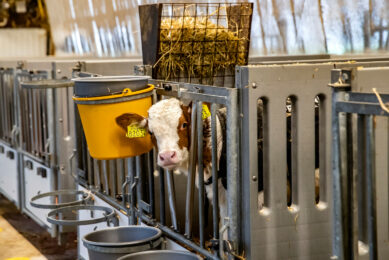Optimising dairy calf and heifer performance

Calf health and welfare came under the spotlight at last week’s Dairy Research Partnership online conference, which saw UK researchers sharing the outcomes of a range of projects.
Dr David Bell, research associate at Scotland’s Rural College (SRUC), looked at the impact of early life thermal environment on calf performance. Their first challenge looked at calves being exposed to temperatures far lower than in the uterus.
Bell talked about lower critical temperatures – the point when the calf needs to change its posture and move around the pen to keep warm. At birth this in the region of 15°C (59°F) but this falls to 0°C (32°F) at one month, although cattle breeds have different critical temperatures, the Jersey calf’s lower critical temperature is much higher than a Holstein.
The study involved 300 calves in a year-round calving dairy herd where air temperatures, relative humidity, wind speed, liveweight and clinical health scores were monitored from birth to 28 days of life.
“Don’t underestimate the importance of early life environment and housing environment impacts on growth.”
Calf growth rate
Calves were housed in individual hutches from 6-14 days before going into group housing. Results showed that calves born between December and February in the hutch were exposed to lower critical temperatures which did have an effect on growth rate. Offering more bedding and heat lamps had a positive effect on calf health and growth rates, but this could not be proven for stock wearing calf jackets. “Don’t underestimate the importance of early life environment and housing environment impacts on growth,” he said.
Robert Hyde, PhD researcher at the University of Nottingham, highlighted practical housing and management changes for healthy and productive calves. Hyde said dairy calves get a rough deal on dairy farms – lots of health and welfare issues for cows so calves often tend to get neglected. Desk research shows that nearly half of UK calves face respiratory disease and diarrhoea (46%/48%), while 1 in 5 don’t get through passive transfer and mortality rates are at 4.5%.
Taking data from the British Cattle Movement Service (BCMS) between 2011 and 2018, Hyde said 25% of all animals that died on farm died in the first 3 months of life.
The core part of the project was to develop Calf Health Plans. A total of 60 dairy farms were selected, visited, buildings were measured and temperatures and humidity were measured every 15 minutes over 6 months. Blood samples and colostrum bacteriology test results were sampled and birth weights, weaning rates, disease and death rates were monitored.
Among the key results were:
• Colostrum: Farmers need to feed enough (3/4 litres within 6 hours of birth).
• Nutrition: Growing calves need 6-8 litres per day.
• Hygiene: Calf pens should be cleaned every 30 days and calving pens every 21 days.
• Housing: Temperature is very important and nesting and supplementary heat can help.
The calf plan was tested with the 60 farms randomly split whereby half received a calf plan with 20 key factors. The results showed those with the calf plan found lower mortality rates and diarrhoea levels, although pneumonia rates were flat across the board.
Heifer grazing systems
Robert Patterson, PhD researcher at the Agro-Food and Biosciences Institute in Hillsborough, Northern Ireland, highlighted optimising heifer grazing systems saying there was a large range in post-weaning practices and often it was the most commonly overlooked element of the dairying system.
Patterson said dairy farmers wanted to work on a 24-month calving policy to get a good return on investment. This meant that the animals needed to reach puberty at 13 months and in-calf at 15 months, so good early nutrition and decent live weight gains were important. “Grass is an understated resource – it is the cheapest food and a valuable asset and should be incorporated as much as possible into diets,” he said.
The first study investigated the optimum pasture allowance for replacement dairy heifers to achieve optimal animal and pasture performance. There has been limited research in this area but industry guidelines vary from 2-3% for growing cattle.
Dairy pasture allowance (% bodyweight) on maiden heifers in the 159-day trial found that the heifer DLWF (kg/day) of 0.8kg/day was met with a 3% bodyweight daily pasture allowance, compared to 0.75kg/day at a 2.4% rate and 0.64kg/day at a 1.8% rate.
The figures were different for in-calf heifers with 2.4% bodyweight daily pasture allowance leading to a 0.79% heifer DWLF (kg/day) compared to 0.91% heifer kg/day for those fed 3%, which meant they were over-conditioned.
Optimum pasture allowance to achieve target growth without supplementary feeding and acceptable levels of sward utilisation was 3% of bodyweight for maiden heifers and 2.4% of bodyweight for in-calf heifers. Heifers ahead of target could be allocated lower pasture allowances by 0.5% to target higher rates of pasture utilisation, he added.
Join 13,000+ subscribers
Subscribe to our newsletter to stay updated about all the need-to-know content in the dairy sector, two times a week.










